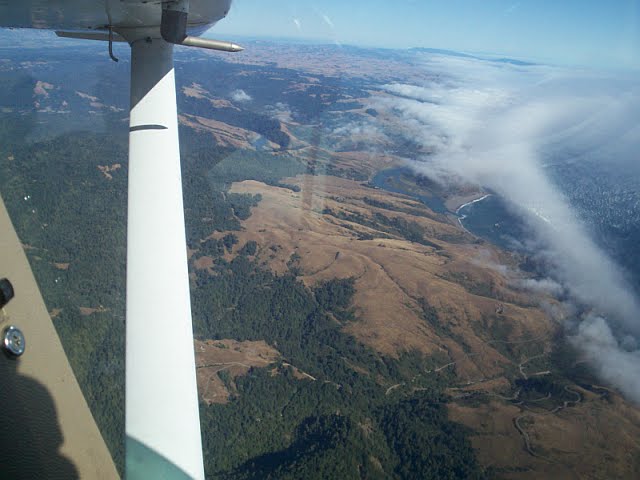When my instructor said we would fly DME arcs on my next lesson I was sure my day of reckoning had come. Yes, I had learned quite a bit of this IFR stuff already. I had even passed the FAA written test. However, I was certain that DME arcs would be the linchpin of my ultimate failure. DME arcs would finally prove to my instructor that I was too mentally deficient to learn to fly IFR safely.
I could hear him now, “You know, Gary, a career in air traffic control could keep you connected to aviation without the stress of IFR.”
DME arcs can sound confusing when they are explained or diagrammed on the ground. In the air the process becomes quite simple. This may be one of those issues in flying where it may be better not to try and figure it out on your own. Let an instructor show you so you don’t learn the wrong way to do it and complicate what is a very simple procedure.
I know this because I did try to figure it out on my own. I wasted a bunch of time and mental energy. This created an added stressor when my instructor announced we would fly our first DME arc. By then, I was convinced this was another of those mathematical quagmires that my feeble brain was not going to grasp.
Even when my instructor tried to explain and diagram them on the ground before our flight, my brain was fogged with my preconceptions over the damn things. Then we got in the air and flying the arc was so simple it was ridiculous. Flew my first one, and then a second one, perfectly.
Arcs are flown either clockwise or counter-clockwise (not right and left). Make a note of which way the arc will be flown.
While inbound to the DME arc, look at the heading indicator and note the heading that is currently 90 degrees from the inbound intercept course, and in the direction of the arc (clock-wise/counter-clockwise). This will be the heading to turn to for intercepting the arc. Make sure you pick the exact 90 degree heading (don't just get an approximate heading).
Set the heading bug on the 90 degree course.
Reduce the speed to approach speed. Do not try and fly the arc at cruise speed. The rate of change is too great to adequately make adjustments on the arc.
Begin the 90 degree turn 0.5 miles from arc - if the arc is 7 or more miles. If the arc is 5 or 6 miles you should start a little sooner.
Turn 90 degrees in the direction of arc. When wings are level, center the VOR needle with the OBS. Remain on this course until the needle deflects 2-1/2 to four dots in the direction of the VOR.
Now center the OBS again and immediately note where the magnetic heading is, on the VOR, 90 degrees from the centered OBS.
Now turn the plane to the heading indicated (90 degrees from the centered OBS).
On the above VOR, we have centered the needle after turning 90 degrees. If we have turned to the left (clockwise) we look 90 degrees to the left on the OBS which indicates 150 degrees. We now turn the plane from our present heading to the 150 degree heading. (Note that the VOR is not set for the heading we are flying - it is simply set for the radial we are on. This can be somewhat confusing when we are used to flying the same heading as the VOR.)
Now note the distance from the VOR. Is it greater or less than the desired arc? If the distance is greater/less than the desired arc, then on the next heading change add +/- 5 degrees correction to the next heading change.
As the OBS needle reaches 2-1/2 to 4 degrees from center - re-center the OBS and look 90 degrees to the left. This, again will be our new heading. Now is the time to add in any correction. In our example of a clockwise arc, turn +/-5 degrees less than indicated if we are beyond the arc and +/-5 degrees more if we are inside the arc.
Continuously monitor DME distance (on the GPS if you don't have a DME) but do not make small heading adjustments. Correct the heading only after you have re-centered the needle and select a new heading that will correct the under-shoot or over-shoot of the arc. Also adjust the heading to correct for any effects of wind.
You are flying a series of straight segments; not trying to fly a curve. Pick a new heading and stay on that heading.
Continue the process making heading corrections as required to remain within 1 nautical mile (or less) of the arc.
Note that as you fly around the arc the effect of the wind will change with the course changes. A crosswind may become a head-wind, or some other combination.
Turn to the final inbound course when approximately 20 degrees from final course line.
Simple, stupid.
Gary



No comments:
Post a Comment